Types of surface finishes for screws
How to select the surface finish for screws? There are many types of surface treatment processes for screws, but the most common ones are oxidation, electrophoresis, electroplating, and Dacromet. In this article, we will summarize the different colors that each type of surface treatment produces.
The most important factor in deciding the appropriate surface treatment for a screw is the environment in which it will be used. If the screws will be exposed to harsh conditions, such as high temperatures or chemicals, then a more durable finish, such as Dacromet, is necessary.
Which knind of coating for screws are right for you?
In order to obtain the optimum combination of properties, it is first necessary to identify the needs of the application and then to select a surface treatment that will provide the desired level of performance. There are many factors to consider when making this selection, including appearance, cost, durability, and ease of maintenance.
Black plated screws
Common black screws are mainly used to fix black or other dark-colored electrical appliances used in the bottom case or backshell, in order to reduce the management of most things also use black screws inside the machine. There are several processes such as black oxide, black nickel, black zinc, and electrophoretic black.
The black oxide process is the most stable and economical, but the adhesion is poor. The black nickel process has good adhesion but is not very durable. The black zinc process has better adhesion and durability than the black oxide process, but it is less economic. Electrophoretic black has good stability and corrosion resistance.
It is a new process, but the cost is high. The surface treatment of screws can be divided into two types: one is to form a protective film on the surface of the screws, which has good corrosion resistance and wear resistance; The other is to change the color of the screws, mainly for the purpose of esthetics.
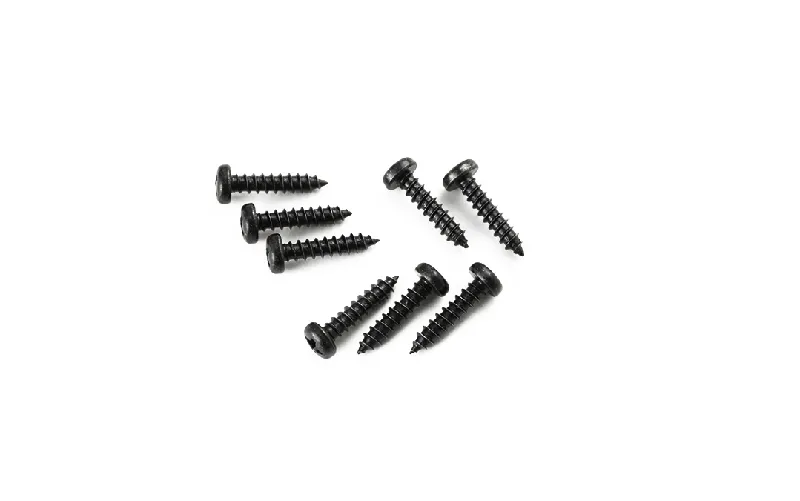
Black oxide screws
Divided into room temperature blackening and high temperature blackening, to room temperature blackening for example process flow is: chemical degreasing – hot water washing – cold water washing – rust removal acid etching – cleaning – blackening – cleaning -Over oil or over closed. It is a layer of oxide film formed under the high temperature of sodium hydroxide and sodium nitrite at greater than 100 degrees.
The main component of the oxide film is ferric tetroxide (Fe3C4), the film is only 0.6-1.5um, relatively poor corrosion resistance, in the case of no oil or closed neutral salt spray only about 1-2 hours, after the oil in about 3-4 hours. Small appliances do not use this process of screws for the time being. Distinguished from the appearance of color, oxide black is close to black zinc and electrophoretic black, but not as bright as black zinc and electrophoretic black.
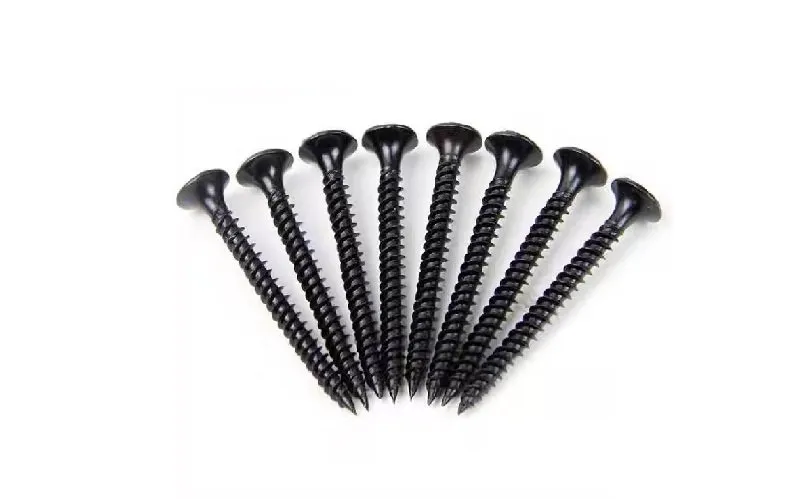
Electroplating black screws
There are two kinds of black electroplating: black zinc and black nickel. The process principle is basically the same, but the formulation of the electroplating solution and the post-treatment lacquers or passivation solution are different. Zinc is chemically active and is prone to oxidation and darkening in the atmosphere, resulting in “white rust” corrosion.
After galvanizing, a chromate treatment is applied to cover the zinc with a chemical conversion film to keep the active metal in a passivated state. The passivation film can be divided into white passivation (white zinc), light blue (blue zinc), black passivation (black zinc), military green passivation (green zinc), etc. from the appearance.
Black zinc plating screws
Electroplating process is: oil removal – cleaning – weak acid etching – zinc plating – cleaning – passivation – cleaning – drying – over the latticework; the last latticework is mainly black oil (a kind of paint), tenna water, rubber water in a certain ratio, its main function is to improve the screw surface black uniformity and brightness and enhance the screw corrosion resistance, after the latticework resistance to neutral salt spray capacity of more than 20, such as can be over the oil corrosion resistance can also be improved.
Black zinc screws neutral salt spray test for 12 hours, the industry level is relatively high, routine experiments have not appeared in the failure phenomenon. From the appearance of the distinction than the black nickel color is darker, and oxide black and electrophoretic black is closer, the way to distinguish is to grind a few times on white paper to reveal the zinc greenish white.
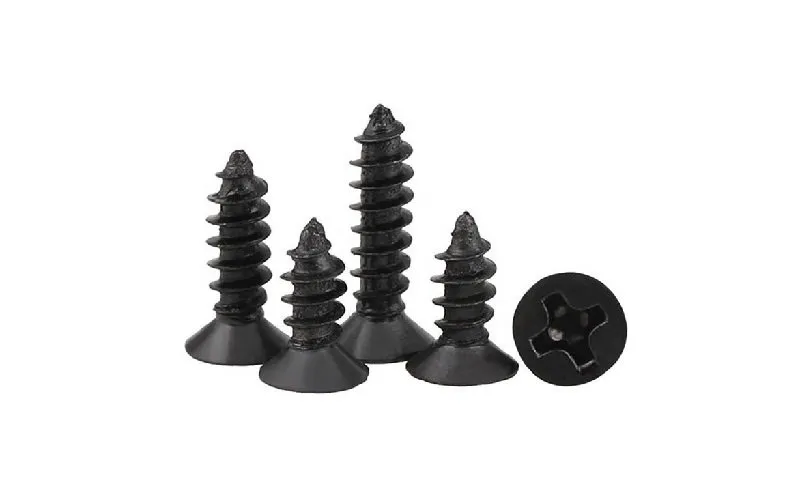
Black nickel plating screws
The electroplating process is: degreasing – cleaning – weak acid activation – cleaning – copper bottom plating – activation – cleaning – black nickel plating – cleaning – passivation – cleaning – drying – over latch rack, the black nickel layer obtained from the black nickel plating solution, roughly contains 40%-60% nickel, 20%-30% zinc, 10%-15% sulfur and about 10% organic matter.
During the plating process, the sulfur in thiocyanate ion is transformed into sulfur ion and generates black nickel sulfide with nickel. Process more copper bottom plating, the main role is easier after the process of nickel plating and can improve the corrosion resistance of the screw, the general thickness of the copper bottom in about 1 micron, such as increasing the thickness of the copper bottom can improve corrosion resistance, but the composition will increase accordingly.
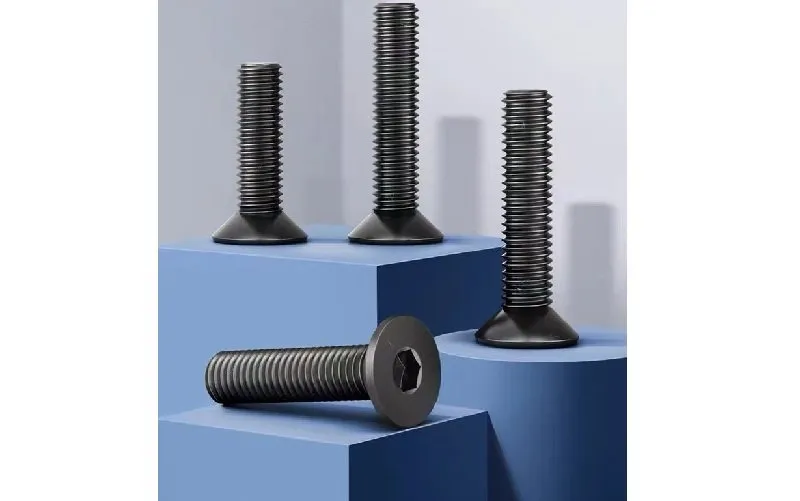
The industry level of resistance to neutral salt spray is generally 6-12 hours, such as improving the accuracy of the ratio of additives used in various plating and the quality of raw materials can be improved. Nickel plating process in general plating manufacturers to improve corrosion resistance will be over oil or closed, and the screws used in consideration of the corrosion of plastic parts can not use over oil to improve the salt spray time, neutral salt spray test time is 8 hours, routine experiments are not stable, there have been several batches of routine neutral salt spray failure phenomenon.
Distinguish from the appearance of black nickel than other black zinc, black oxide and electrophoretic black color dark, easy to distinguish.
Electrophoretic black screws
The use of electrochemical methods of organic resin colloidal particles deposited on the parts to form a variety of colors of organic coating layer, the industry uses more electrophoresis black, black process for example: degreasing – cleaning – phosphating – electrophoresis paint – drying. Can be divided into anodic electrophoresis (resin ionization into negative ions) and cathodic electrophoresis (resin electrophoresis into positive ions), compared with the paint process construction performance, pollution and harm to the environment to reduce its resistance to neutral salt spray performance in 300 hours or more, the cost and corrosion resistance and Dacromet process is similar.
White plated screws
White plated screws are also used in many exposed, mainly white nickel, white zinc and stainless steel screws without surface treatment.
White zinc screws
The electroplating process is: degreasing – cleaning – weak acid activation – electroplating zinc – cleaning – white passivation hair – cleaning – drying, different from black zinc is not over latch frame and passivation solution differences, white passivation is a colorless transparent zinc oxide film, almost does not contain chromium, so the corrosion resistance relative to black zinc, blue zinc, color zinc of some poor, industry standard in 6-12 hours, there is this electroplating factory by improving the passivation solution ratio precision can do resistance to neutral salt spray about 20 hours.
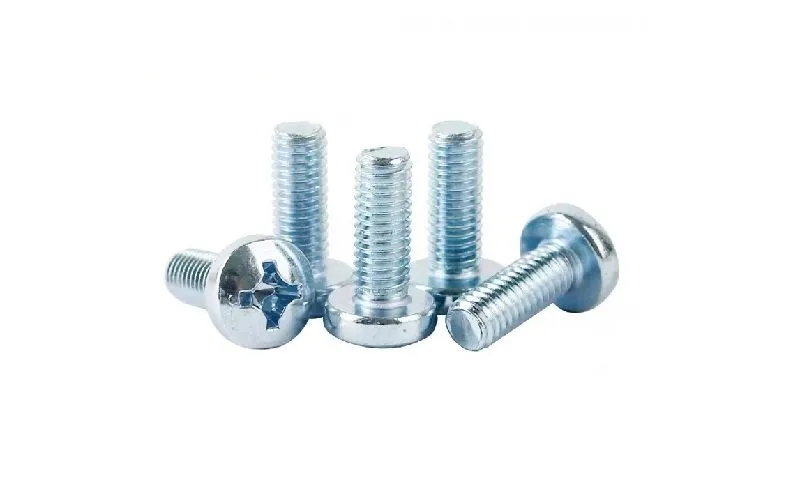
Because the surface treatment process of white zinc plating screws do neutral salt spray test initially appears is the surface corrosion of white plating, the phenomenon of red rust is in about 40 hours, so white zinc corrosion resistance is better than white nickel. The appearance is darker compared to white nickel, and white zinc is the original color of zinc and greenish white, which is more different from white nickel.
White Nickel screws
The electroplating process is: degreasing – cleaning – weak acid activation – cleaning – copper bottom plating – activation – cleaning – electroplating nickel – cleaning – passivation – cleaning – drying – or closed, and black nickel process is basically the same, mainly the formulation of the plating solution is different, less zinc sulfide and added.
Nickel is a silver-white, slightly yellow metal, for which a better appearance is obtained, a nickel plating brightener is added. Its corrosion resistance and black nickel is also not very different 6-12 hours, the process will also be generally manufacturers over oil or closed, such as consideration of the impact of corrosion on plastic parts incoming material should be used as the focus of control whether over oil.
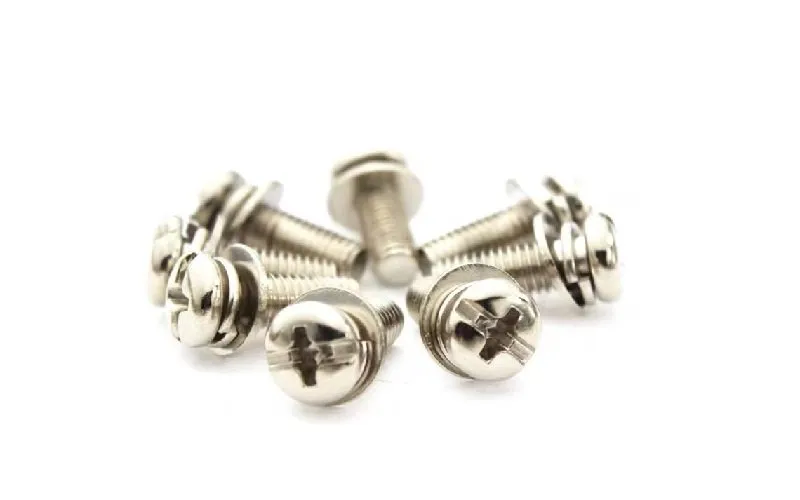
Stainless steel screws
Stainless steel screws used for SUS304 material, the industry is also useful SUS202 or SUS201, and SUS410 (stainless steel screws).
If it is used in the anti-corrosion requirements of the environment, 316 A4-80 stainless steel screws are a good choice.
Stainless steel screw is the production of surface oil cleaning off and the formation of a protective film, its corrosion resistance according to the different materials have some differences, its resistance to neutral salt fog SUS304 in 48-96 hours, SUS202 good surface cleaning passivation can also be resistant to neutral salt fog more than 48, and what we call stainless steel screws SUS410 resistance to neutral salt in about 20 hours, its cost is higher than all ferritic plus surface treatment of the screw, so it is best not to choose stainless steel screws behind.
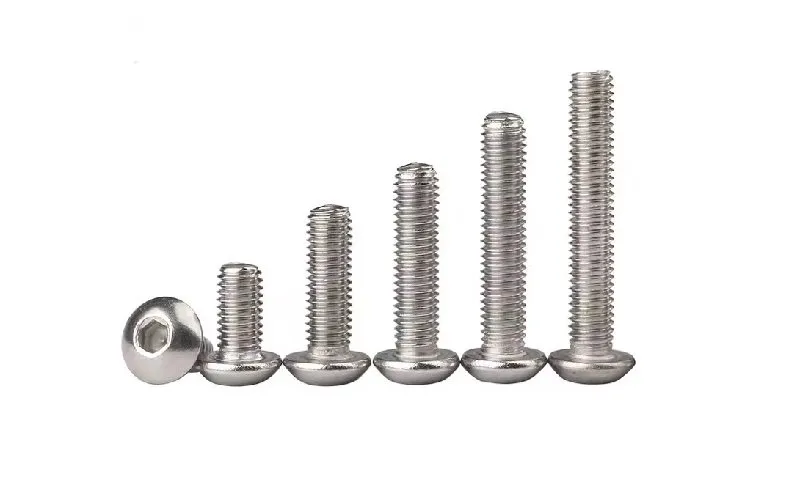
Surface treatment of stainless steel screws
For general purpose stainless steel screws are not required to be surface treated, if our customers have special requirements for salt spray test, we can also meet the needs of our customers.
About the stainless steel screws for nuclear power, we generally use the surface treatment of electroplated nickel, after the completion of the plating of the surface is closed, the salt spray test can reach 2000 hours. Our stainless steel screws with nickel plating surface treatment can be used for 100 years without red rust.
The surface treatment of electroplated zinc screws is to improve the corrosion resistance of screws, and the color is generally yellow. The advantage of this surface treatment process is that it has good corrosion resistance and low cost. The disadvantage is that the adhesion between the coating and the substrate is poor, so it is not suitable for long-term outdoor use.
Other color plated screws
Generally only for the use inside the machine, mainly blue zinc, green zinc, color zinc, and Dacromet, etc., blue zinc and green zinc according to different needs are also often used for external, blue zinc industry use more, green zinc is less.
Blue Zinc and Green Zinc screws
The process is roughly the same as white zinc. Blue zinc is a passivated zinc oxide film containing 0.5-0.6mg/dm2 of trivalent chromium. Green passivation, also called five-acid passivation, can obtain a thick grass-green film. The passivation solution contains phosphate ions, and the resulting oily grass-green film is a protective film with a complex structure compounded by chromate and phosphate.
For its corrosion resistance, blue zinc is somewhat better than white zinc, while green zinc is somewhat better than blue zinc. The color of blue zinc is slightly blue is relatively close to white zinc, which is more used in the industry and can be used later as an alternative process for screws when designing products.
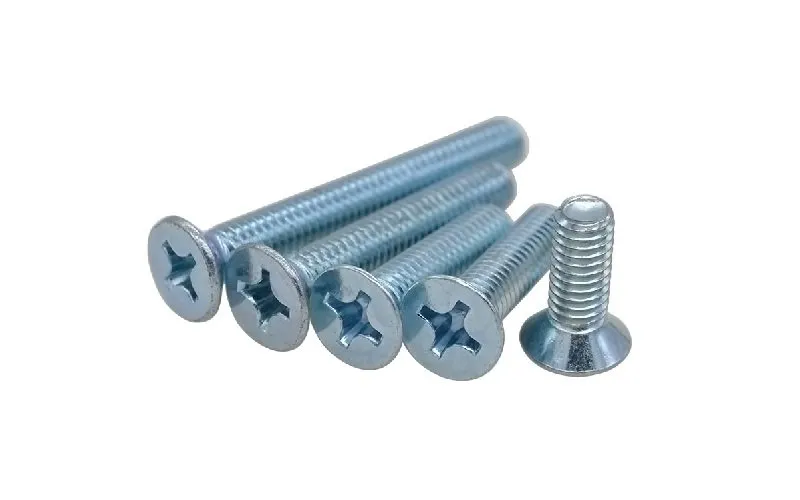
Rainbow zinc screws
In the galvanizing process in the color zinc is relatively good corrosion resistance, its color passivation process: galvanizing – cleaning – 2%-3% nitric acid out of light – cleaning – low chromium color passivation – cleaning -Baking aging. Passivation temperature is too low, the film is slow, the color is light film thin. If the temperature is high, the film will be thick and loose and not firmly attached. It is best to control at about 25 degrees to ensure that the same color is obtained within a certain period of time.
After passivation, it must be aged by baking to improve the adhesion and corrosion resistance of the film. Color zinc plated screws by touching the bottom of the resistance to neutral salt spray in more than 48 hours, good control can do more than 100 hours.
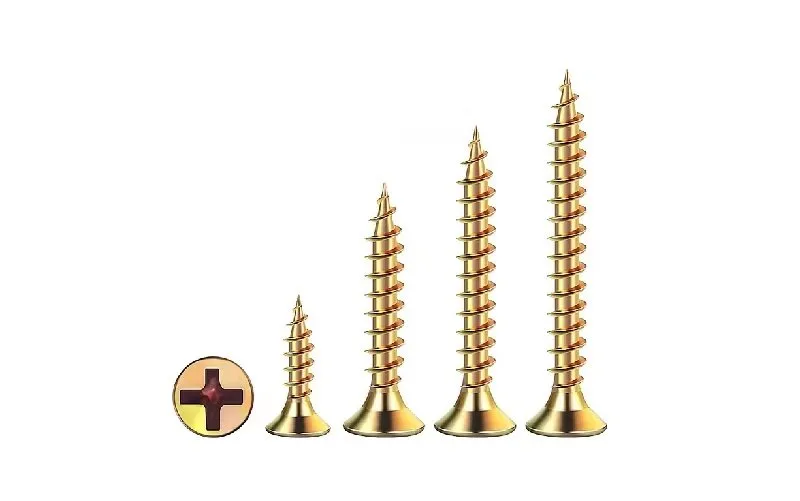
Dacromet coating screws
Flaky zinc-based chromium salt protective coating is also called zinc-aluminum coating. The basic process is degreasing – degreasing – coating – preheating – sintering – cooling. The process will generally have 2-4 times from coating to cooling, as screws with dip coating such as to reach a certain thickness need to do more times.
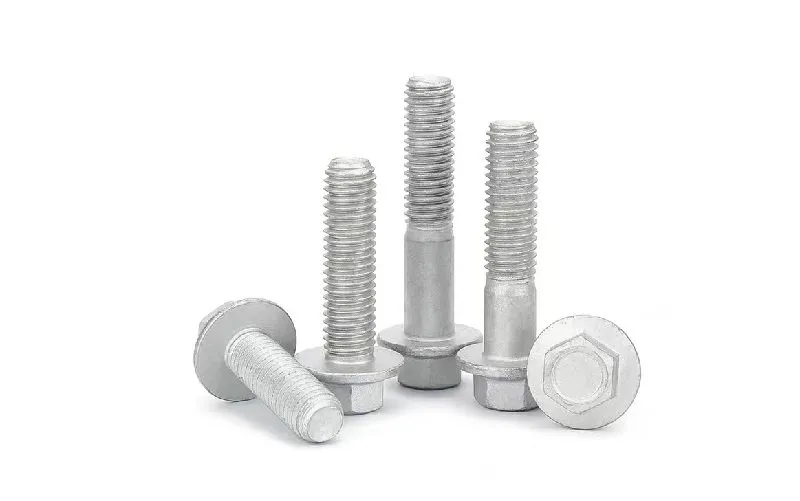
The structure is on the metal surface, coated with a layer of Dacromet solution (i.e. a highly dispersible aqueous solution containing scaled zinc, aluminum [scale generally 0.1-0.2X10-15 microns] Cr03, and special organic materials), after a certain time of insulation and baking at about 300°C, the hexavalent chromium in the Dacromet solution is reduced to trivalent chromium, resulting in an amorphous complex chromate compound (nCr03 mCr203).
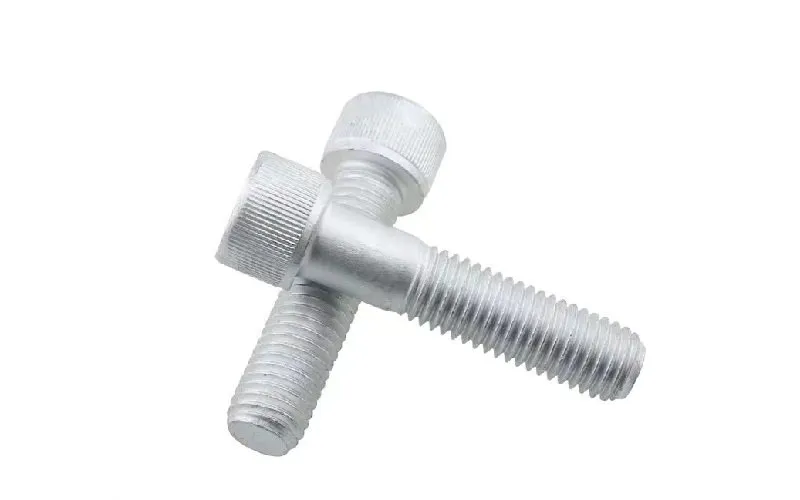
Corrosion resistance is very good neutral salt can reach more than 300 hours, the disadvantage is that the coating is not uniform, thin position 5-10um, the thick position has about 40um, will affect the depth of the screw tooth diameter, so machine tapping screws and screws with small tooth diameter are good not to use Dacromet process as a surface treatment.